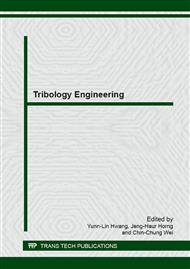[1]
Y. H. Jeong and B. K. Min, Geometry prediction of EDM-drilled holes and tool electrode shapes of micro-EDM process using simulation, International Journal of Machine Tools and Manufacture, vol. 47 (2007), pp.1817-1826.
DOI: 10.1016/j.ijmachtools.2007.04.011
Google Scholar
[2]
T. Chan, T. Yue, and H. Man, Ultrasonically aided laser drilling of particle reinforced aluminium based composites, Materials science and technology, vol. 14 (1998), pp.9-10.
DOI: 10.1179/mst.1998.14.9-10.1039
Google Scholar
[3]
L. Kudla, Influence of feed motion features on small holes drilling process, " Journal of Materials Processing Technology, vol. 109 (2001), pp.236-241.
DOI: 10.1016/s0924-0136(00)00804-9
Google Scholar
[4]
H. Kumar, S. Singhand P. Kumar, Magnetic Abrasive Finishing- A Review, International Journal of Engineering Research & Technology, vol. 2 (2013).
Google Scholar
[5]
V.K. Jain and S.G. Adsul, "Experimental investigations into abrasive flow machining process, International Journal of Machine Tools & Manufacture, Vol. 40 (2000), pp.1103-1021.
DOI: 10.1016/s0890-6955(99)00114-5
Google Scholar
[6]
R. Balasubramaniama,J. Krishnana and N. Ramakrishnanb, An empirical study on the generation of an edge radius in abrasive jet external deburring (AJED) , Journal of Materials Processing Technology, Vol99 (2000) pp.49-53.
DOI: 10.1016/s0924-0136(99)00350-7
Google Scholar
[7]
H. Orbanic, B. Jurisevic, D. Kramar, M. Grah and M. Junkar, Miniaturization of injection abrasive water jet machining process , Journal of Mechanical Engineering Science, vol. 220 (2006), pp.1697-1705.
DOI: 10.1243/09544062jmes217
Google Scholar
[8]
F.C. Tsai B.H. Yan C.Y. Kuan, and F.Y. Huang, A Taguchi and experimental investigation into the optimal processing conditions for the abrasive jet polishing of SKD61 mold steel, Machine Tools &Manufacture, Vol. 48 (2008), pp.932-945.
DOI: 10.1016/j.ijmachtools.2007.08.019
Google Scholar
[9]
S.L. Ko , Yu M. Baron , J.I. Park , Micro deburring for precision parts using magnetic abrasive finishing method , Journal of Materials Processing Technology, Vol. 187-188 (2007), pp.19-25.
DOI: 10.1016/j.jmatprotec.2006.11.183
Google Scholar


